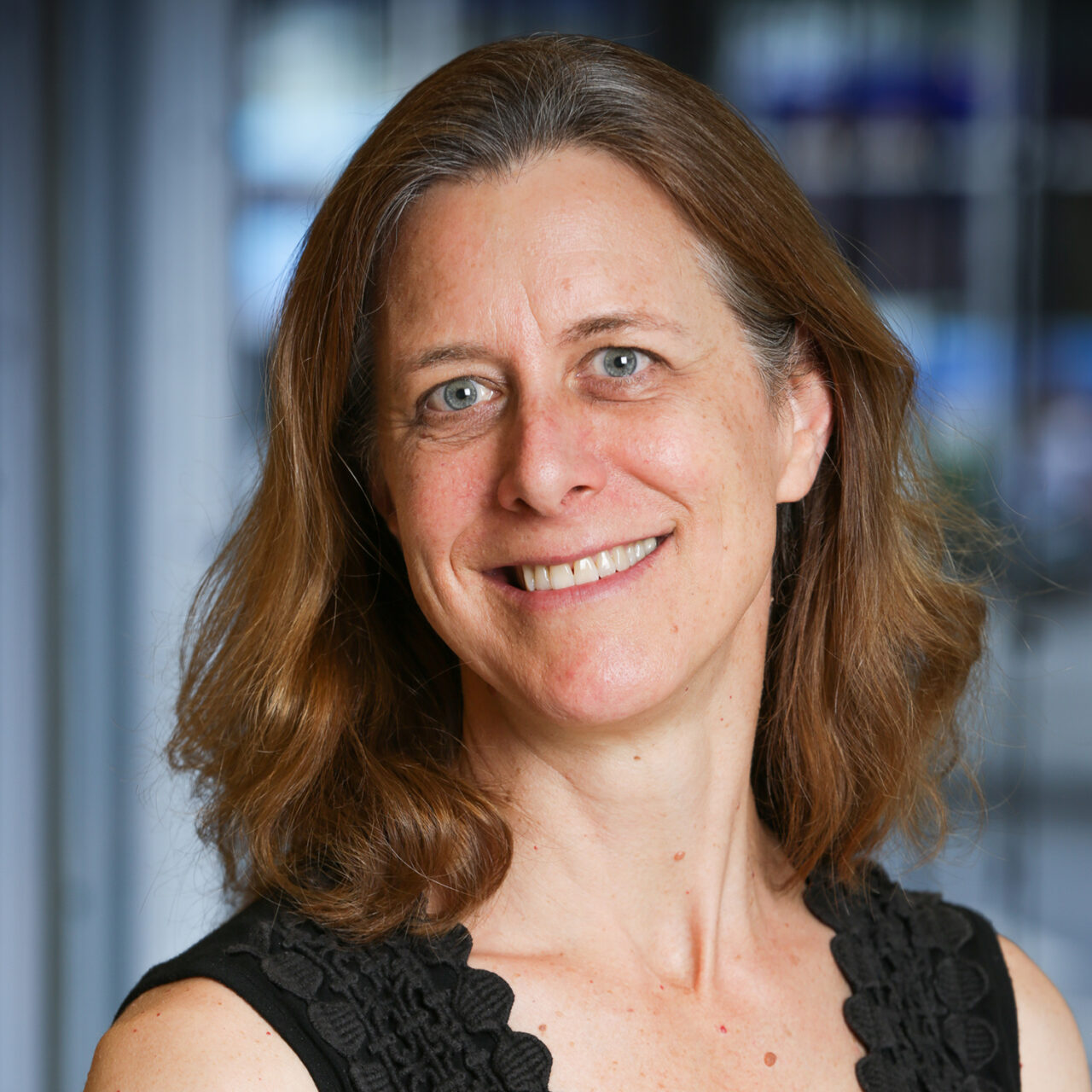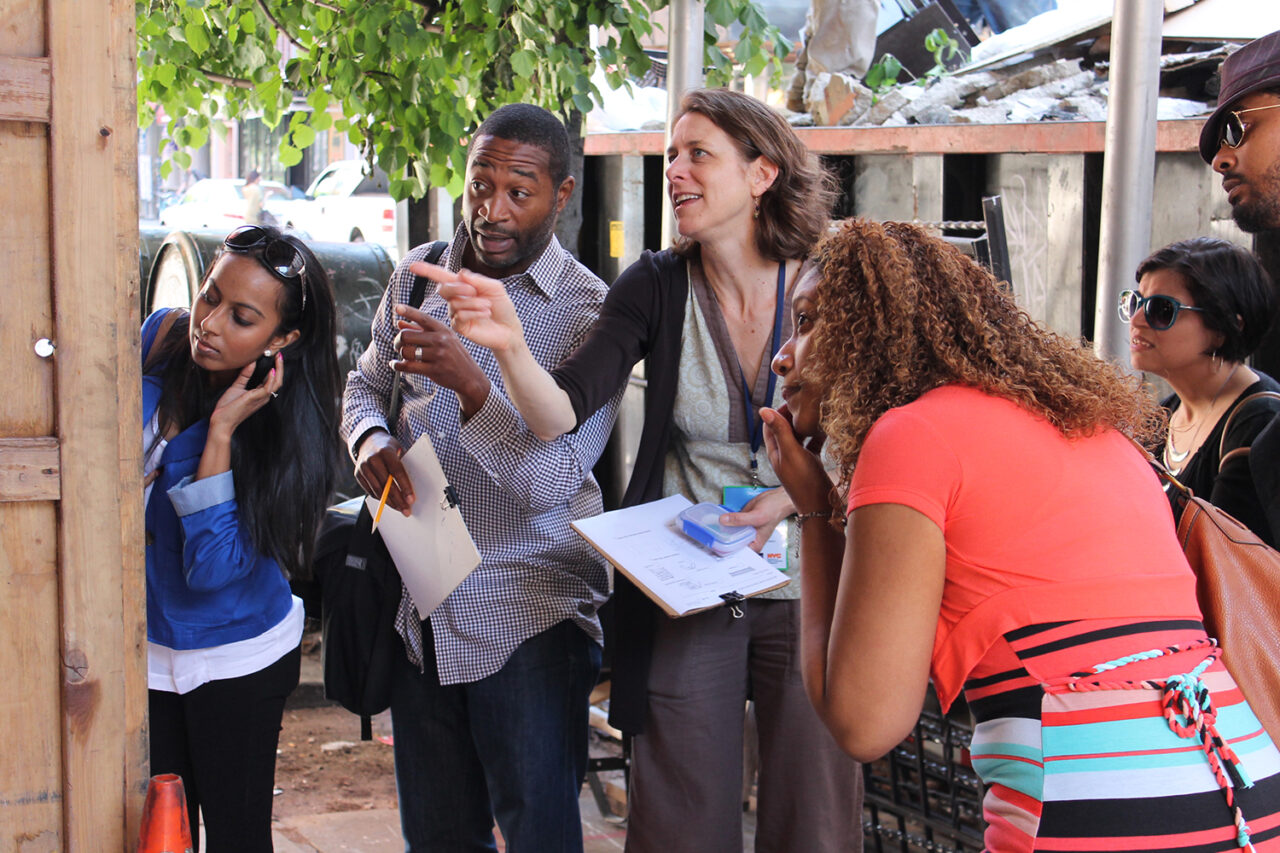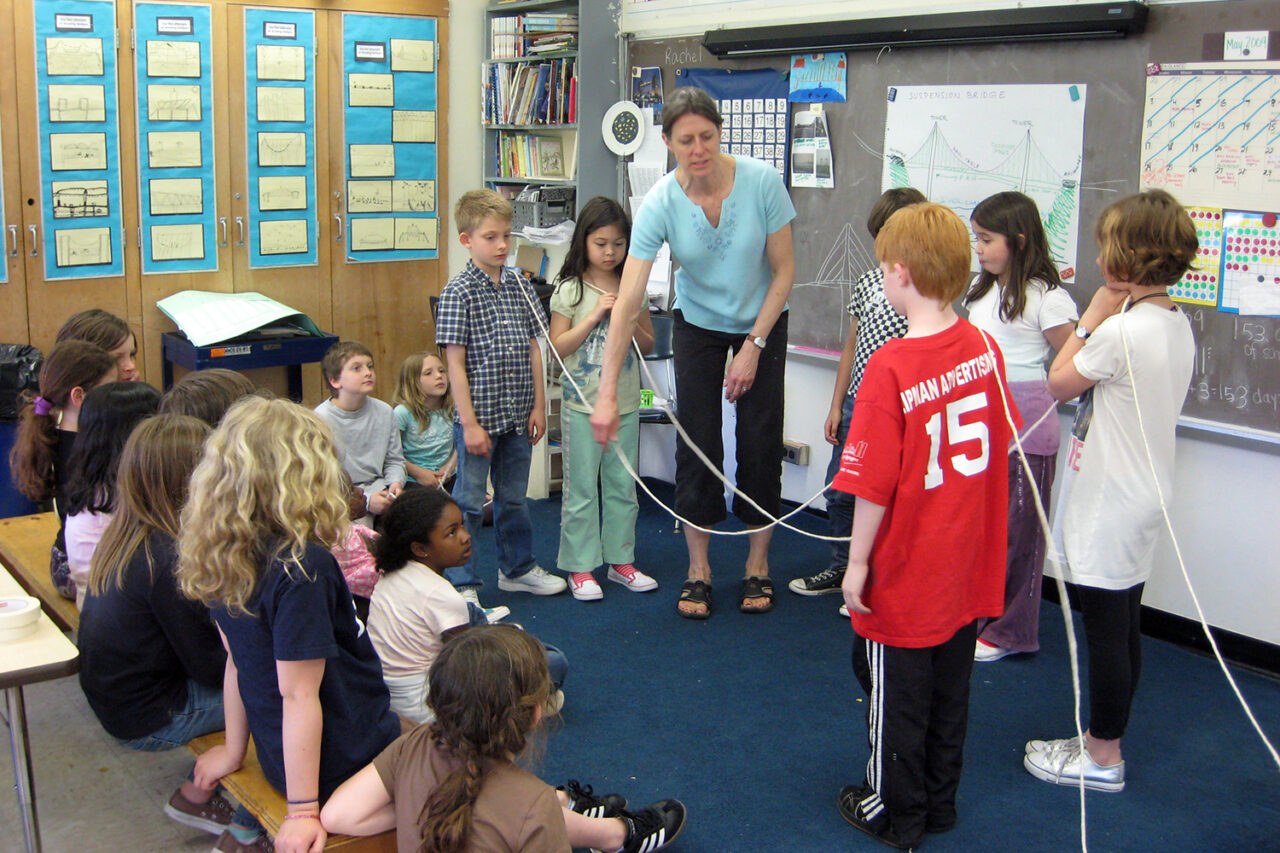by Rachel Serkin
After 27 transformative years, Catherine Teegarden will be stepping down from her role as Director of Education at the Center for Architecture. Teegarden was one of the original members of the AIANY Learning by Design:NY Committee, founded in 1990 to develop built environment education programs at the Chapter. She later joined the Center for Architecture (then the New York Foundation for Architecture) in 1996 as the organization’s first paid K-12 employee. Over her nearly three decades at the Center for Architecture, Teegarden played an integral role in the development of our world-class programming for students of all ages. Thanks to her leadership, our K-12 initiatives serve over 5,500 youth and adults per year through carefully curated programs designed to meet a wide range of ages and interests, including through our in-class residencies in 20 schools. Below, School Programs Manager Rachel Serkin interviews Teegarden about her career in design education.
What first drew you to the idea of bringing architecture and design education to K-12 audiences?
Shortly after I finished my Master of Architecture degree, I was lucky enough to get a job as a full-time architecture teacher at PS 84M, a public elementary school on the Upper West Side that wanted to focus its curriculum on the urban environment. This was a new position at the school, funded through a federal MSAP grant, so I got to work as an out-of-classroom specialist, collaborating with classroom teachers to dream up architecture projects that would enrich their studies. I had always been interested in teaching kids, but was more interested in the topic of architecture, so this unique opportunity really put it all together for me.
At about the same time, Linda Yowell, FAIA, and AIANY President Frances Halsband, FAIA, had initiated a new K-12 architecture education committee at the chapter. I joined this committee as a volunteer in 1990, and after a few years, became its first paid staff person, creating the in-school classroom residency program we still call Learning by Design:NY. I feel very fortunate that I have been able to stay in this hybrid field of K-12 architecture education ever since.
In your tenure as Director of Education, the Center for Architecture has undergone many changes. Could you speak about changes that you’re particularly proud of or that posed a unique challenge?
I came back to work at the Center for Architecture in 2009 after taking time off to be with my own children and was put in charge of developing the organization’s family, school, and youth programs. While our in-school LBD:NY programs have remained fairly steady since that time (about 20 school partners per year), I’m very proud of how much we have been able to grow our Center-based programs. We now have a year-round slate of varied programs for every age group that draws students from across NYC, as well as nationally and internationally.
One of our more challenging but satisfying undertakings was the restructuring of the 501c3 CFA Foundation together with AIA New York to create the Center for Architecture, a transition that took place in 2015. As the Foundation’s acting Executive Director for part of that time, I was very involved in the strategic planning process. The group made good decisions, taking major steps for both organizations to better position themselves for the future.
I’m also very glad I was able to partner with the Frank Lloyd Wright Foundation and Downtown Bookworks to write an activity book for kids about Frank Lloyd Wright. How to Think Like Frank Lloyd Wright is now offer for sale at the Center.
Today the Center for Architecture offers a diverse roster of K-12 programming. What have been some of your favorite programs to design and teach?
I’ve really enjoyed developing some of our history-based Learning by Design:NY programs focused on the architecture of other cultures or time periods, particularly Lenape Native Americans, Japanese architecture, and New York City tenements, to name a few. I’m also really interested in the structural side of architecture and enjoy teaching students to understand this through projects such as bridge design and building our geodesic dome. But my all-time favorite is probably our treehouse design program, which brings together architecture, structure, nature, and model-building in an open-ended and fanciful way. I’m always super impressed by what the kids come up with!
Why do you think architecture and design education is important for younger learners?
Especially in a place like New York City, where almost every inch of space has been designed and built by people, I feel it is essential for young people to understand how this built world is made. My goal has never been to train kids to be architects, but rather to build their awareness of how architecture and design shape our world, and to give them the insights, tools and access to engage in this process as they so choose.
What advice would you give to children who are interested in architecture and design?
Learn how to draw and build things and keep practicing these skills. Experiment with making your own designs. Explore the world around you and keep your eyes open for designs you like and dislike to get new ideas, see what is possible and how others have done it, and build your own repertoire and design thinking.


